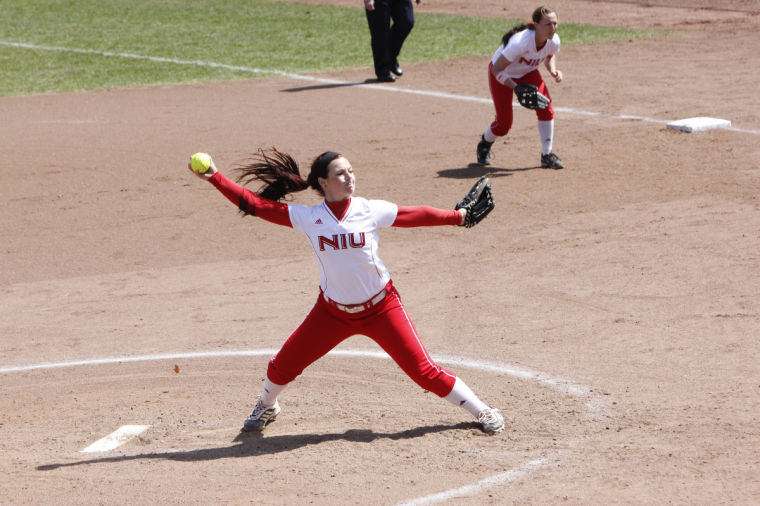The key to pitching in softball is technique
April 15, 2013
There are many differences between softball and baseball, including pitching style.
The differences do not stop with the style itself, as the usage of pitchers in softball is vastly different than in baseball.
NIU softball is in a similar vein to many other programs in that it utilizes only a few pitchers. There are four pitchers listed as such on the roster, and for the most part, sophomores Emily Norton and Jessica Sturm have taken on the brunt of the load for all games this season.
“In our sport you usually have one workhorse that kind of does it, but we have the luxury of two kids who are getting it done right now,” said head coach Christina Sutcliffe. “So being able to start one and bring the other in and vice versa has seemed to be working for us. Having two kids with a completely different look–one’s a righty, one’s a lefty–is in our favor, as well.”
Norton and Sturm have combined to pitch 15 complete games and a total of 240.1 innings on the year. Norton has started 21 games and Sturm has started 12. Sturm’s record stands at 8-10 and Norton at 5-15.
The only other two players to accrue innings this year are freshmen Susana Gurney and Allyson Hecht. The two have combined to appear 10 times and pick up 13.2 innings.
Sutcliffe believes the current situation is working well, and it’s also a positive when the players know what’s expected of them. Hecht and Gurney are the options for when Sturm or Norton have already pitched, but Sutcliffe still sees their improvement in practice and in off-sessions.
“They’re both continuing to work hard,” Sutcliffe said. “Our entire pitching staff has worked hard all year, working some adjustments and growing within. I think they both understand their roles right now are to come in as closers when we need them. They’ve accepted that, and they continue to work for that role.”
With scheduling a stark contrast to baseball, especially major league baseball, another little known factor that sets softball apart is the pitch count factor.
Baseball usually has coaches worried about overexertion, which has led to pitch counts, monitoring usage and making sure starters are healthy. While MLB pitchers did not have pitch counts too long ago, the trend has definitely caught fire in baseball. The same cannot be said for softball.
Sutcliffe has seen the effects firsthand and believes there should probably be more done to protect some of the younger athletes.
“The problem is sometimes we’re not comparing pitch for pitch,” Sutcliffe said. “I’ve seen, unfortunately, 12-and-under girls throwing 1,000 pitches on a weekend. That’s just too much for their shoulders. I wish we did compare pitch for pitch, but in reality we’re probably comparing 100 softball pitches to one baseball pitch as much as our pitchers are overused at a younger age.”
Sturm, for her part, has been playing softball since she was 8 years old. She did not pitch in travel softball, but pitched almost every day in high school.
Despite the usage being a problem for some, Sturm believes the motion of a softball pitch is anatomically less stressful compared to that of baseball. She also believes she and Norton have a good working relationship and scheduling factor, allowing for both pitchers to work well.
“I actually like it; me and Em Norton complement each other really well,” Sturm said. “So, just knowing another pitcher, I can trust her and she’ll get the job done when she’s put in.”







